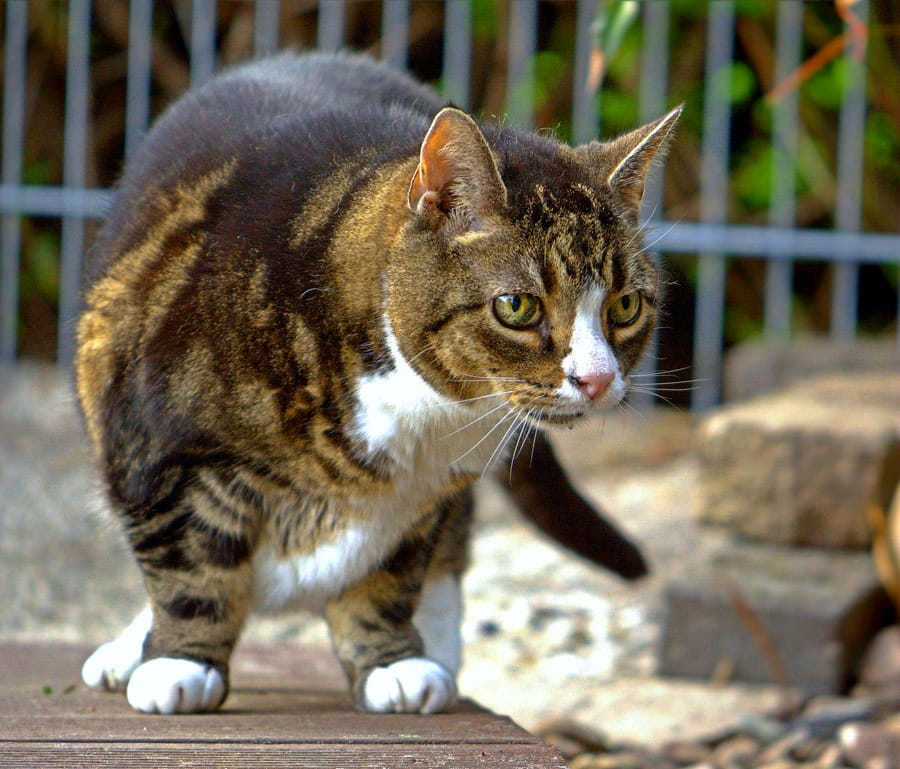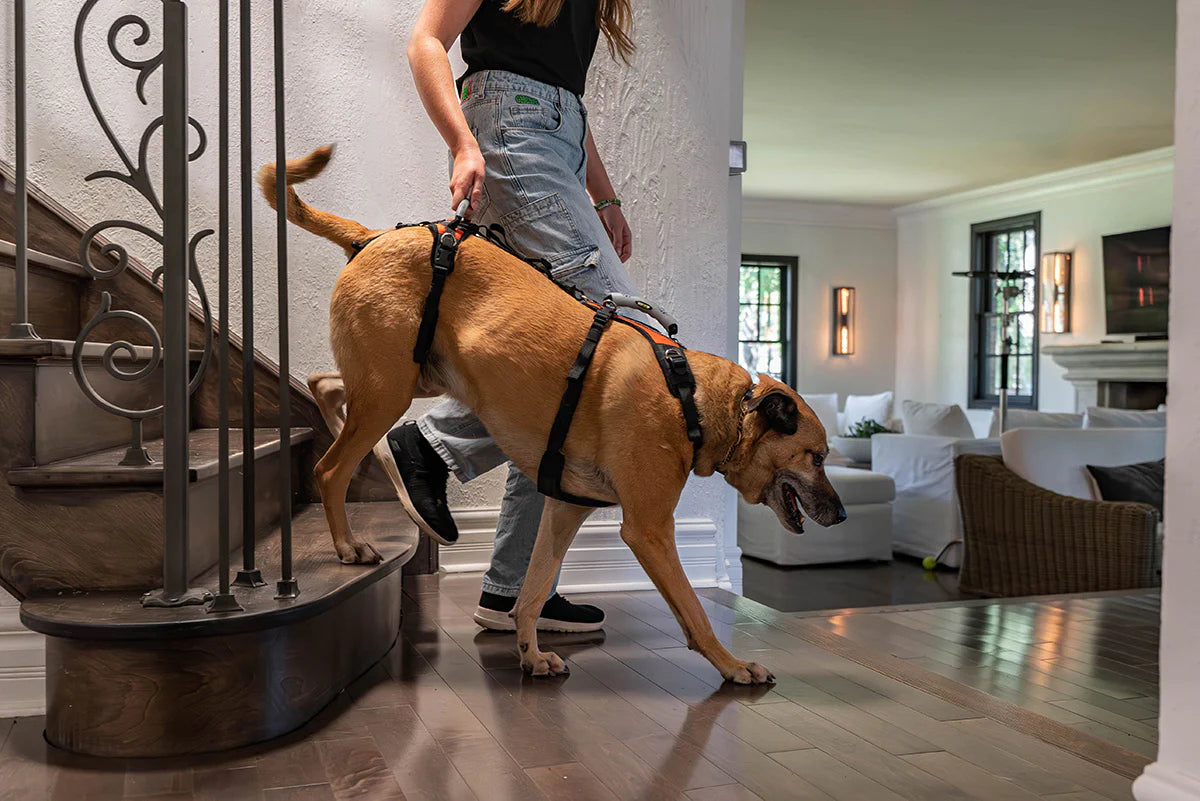Arthritis in Cats: Signs, Symptoms & Treatment Options

Cats display extraordinarily agility, from those sudden, unpredictable darts across the room to impressive leaps onto and off of high spaces. However, this agility depends on healthy, trouble-free joint function. If your cat has one of the conditions classified as feline arthritis, that agility may gradually disappear, replaced by increasing pain, stiffness, and avoidance of favorite pastimes.
Cats who cannot trust their own joints to support their weight comfortably may find themselves unable to get out of harm's way or get the exercise they need. As a cat owner, you have more power to help your struggling feline friend than you might realize.
The right combination of treatments and assistive devices can optimize joint function, prevent further joint damage, and help your cat participate in life more fully. Let's examine the complicated world of feline arthritis, how it affects feline mobility, and what you can do to give your cat a better quality of life.
Types of Arthritis in Cats
Arthritis is a disturbingly common phenomenon in the feline population, afflicting one-third of all cats (as opposed to 20 percent of all dogs). The term "arthritis" is really just a blanket term for any condition that causes degenerative or inflammatory joint pain. While many conditions fall under this category, most cats develop of of two primary types of arthritis:- Primary feline arthritis - Primary feline arthritis occurs due to an auto-immune dysfunction that causes the body to attack its own joints, resulting in swelling, pain, and joint deformation. This problem corresponds to rheumatoid arthritis in humans.
- Secondary feline arthritis - Secondary or acquired feline arthritis develops over time, usually in response to degeneration in the bones and cartilage that make up the joint (aided and abetted by insufficient lubrication in the joints). This condition is also called osteoarthritis.
Why Do Cats Develop Arthritis?
Arthritis can develop in cats for numerous reasons. Both primary and secondary arthritis may occur in response to a joint injury or infection. However, rheumatoid arthritis may develop for no clear reason.
Age also plays a role in arthritis development. While simply getting older doesn’t directly cause arthritis, osteoarthritis may develop after years of normal wear and tear on the joints.
Conditions such as hip dysplasia or unstable kneecaps can raise the risk for osteoarthritis. Lifestyle factors such as obesity and lack of exercise may worsen arthritis.
If your cat carries too much weight, that extra pressure will accelerate the breakdown of cartilage in weight-bearing joints.
If your arthritic cat refuses to exercise, his joints may receive less and less lubrication, allowing the joints to stiffen ever more painfully.
Common Signs and Symptoms of Arthritis in Cats
Cats who suffer from arthritis will naturally avoid any activities that make their pain worse. You may notice that your cat no longer jumps up on the couch, goes exploring, climbs stairs, or plays with the same enthusiasm as before. A cat with painful joints may even avoid being touched, held, or petted, to the point of displaying aggression toward humans and other pets.
Has your cat demonstrated inappropriate elimination or incontinence lately? The underlying problem may have nothing to do with urinary or neurological issues, and everything to do with limited joint mobility. A cat who cannot get to the litter box easily will most likely have accidents.
Take a close look at your unhappy cat's weight-bearing joints. You may actually see signs of swelling or deformation that indicate arthritis. Even if you don't, however, you need to have your cat evaluated by a veterinarian. X-rays and other diagnostic methods can confirm a case of feline arthritis.
Treatment Strategies for Arthritis in Cats
Once you know that your cat has arthritis, you'll want to do everything in your power to treat both the symptoms and the underlying causes of the disorder. Sadly, veterinary medicine has no definitive cure for feline arthritis. However, your veterinarian can prescribe a treatment program to manage the problem. Here are some common approaches for treating feline arthritis.Medication
Anti-inflammatory medication can ease the swelling and pain associated with feline arthritis. Non-steroidal anti-inflammatory drugs (NSAIDs) can relieve symptoms for hours at a time. More severe inflammation may respond to steroids. Your cat will take either one form of medication or the other, never both at the same time.
If your cat suffers from rheumatoid arthritis, your vet may order a course of therapy. Drugs commonly prescribed for cats include corticosteroids, fluticasone, prednisone, budesonide, dexamethasone, cyclosporine, cyclophosphamide, methotrexate, danazol, vincristine, and ketoconazole. While drugs may cause some uncomfortable side effects, cats suffer far less from these issues than dogs who receive immunosuppressive therapy.
Special Diets
Modifications to your cat's dietary and nutritional intake can help control arthritis. Your veterinarian may recommend a specific diet that features anti-inflammatory foods. Your cat may also need dietary changes to support a weight-loss regimen. Weight loss in obese animals can ease the stress on weight-bearing joints. Your cat may simply need to eat smaller meals or fewer snacks, or he may need a special low-fat diet of some kind.Nutritional Supplements
If your cat can't get all the help he needs from dietary changes, your veterinarian may recommend certain nutritional supplements that control inflammation and support joint health. For example, turmeric can tame some of the inflammation associated with osteoarthritis thanks to its active ingredient, curcumin. Supplementation with glucosamine, chondroitin, and omega-3 fatty acids may also prove helpful.Exercise
Much as your cat may resist the idea, regular exercise can help make stiff joints less painful and preserve their range of motion. Since too much exercise may do more harm than good, ask your veterinarian about a gentle exercise routine that will offer maximum benefits.
Your cat may tolerate 15 to 30 minutes of walking several times a week, especially if he has the aid of a cat wheelchair (see below). A minute or two of gentle warm-up and cool-down exercises should accompany these sessions. Some cats may even benefit from hydrotherapy. Partial immersion in water helps to support body weight, making exercise easier.
Household Lifestyle Changes
You can make your arthritic cat's life less painful by making some sensible ergonomic accommodations for his condition. If your cat has trouble making it to the litter box on time due to joint pain, relocate the litter box and/or add multiple trays or boxes around the house for your cat to use in an emergency.
You can also add non-slip pads to stairs, making it easier for an arthritic cat to go from one floor to another. Warmth can ease the joint pain and inflammation of feline arthritis. Consider purchasing a heated pad specifically designed for this purpose, one that can provide a soothing warming sensation without getting too hot for safety or comfort.
Cat Wheelchair Options
As noted above, taking weight off of deteriorated or inflamed joints can help cats enjoy greater comfort and mobility (while also helping to limit further joint damage). If your cat continues to struggle despite your veterinarian's recommendations, he probably needs a wheelchair.
Here at K9 Carts, we offer specialized wheelchairs for both dogs and cats as other pets, who suffer from debilitating joint problems such as arthritis. Our cat wheelchairs bear a close resemblance to our dog wheelchairs, only designed for the smaller, lighter bodies of felines. Simply enter your cat's width, length, height, and girth measurements to receive the correct wheelchair size.
Our rear support cat wheelchairs provide support for the rear legs only, with the assumption that your cat's front legs can bear weight without significant pain or disability. If your cat requires support for both front and rear legs, our full support wheelchairs will be the perfect option. You can determine whether your cat needs a full support wheelchair or a regular cat wheelchair by employing what we call the towel test.
Simply take a strip of towel and cut two leg holes in it for your cat's rear legs. With your cat's legs inserted through the holes, lift the towel slightly, taking some of the weight off of the rear legs, and observe your cat's stance as he walks. If you see signs of stumbling, knucking of the front paws, choppy steps, or balance problems, then your cat probably has foreleg issues that require the use of a full support wheelchair.
We Can Help Your Cat Live a Happier, More Comfortable Life
Your cat undoubtedly wants to get back to an active, fun, comfortable way of life. Take a big step toward granting his wish. Order a cat wheelchair from K9 Carts or contact us today to learn more about our products.
References:
https://www.americanveterinarian.com/journals/amvet/2019/january2019/feline-chronic-pain








